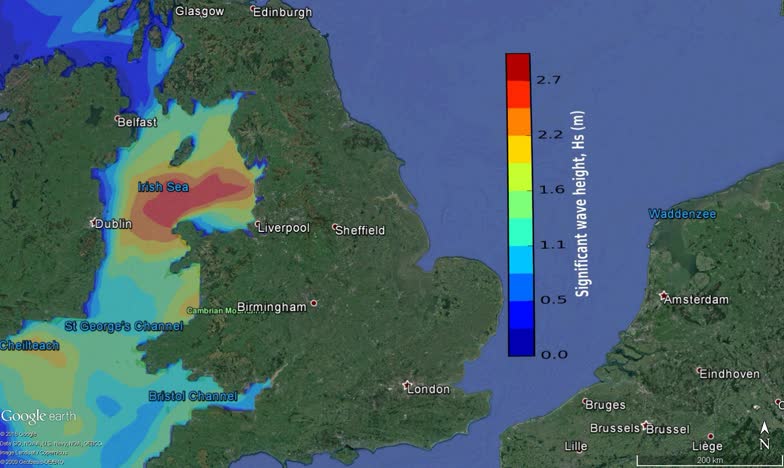
Wave modelling
JM Coastal specialises in developing accurate and well calibrated wave models for a range of coastal modelling applications.
Wind waves are a complex physical phenomena generated by the wind blowing over the sea surface. They occupy a range of scales both in space and time, and can travel thousands of miles before reaching land. Waves have an important role in many oceanic and coastal physical processes and present risks to both offshore and onshore vessels and infrastructure.
From a modelling perspective, waves are a complex phenomena to simulate as they exhibit a certain degree of randomness. A typical wave field is multidirectional and made up of waves with different heights, periods and frequencies. However, spectral wave models such as Tomawac from the Telemac suite and MIKE21SW from DHI allow the user to model the key spectral statistics of wind-generated waves for a given wind forcing, and for the various source and sink terms that lead to their growth, propagation, decay and interaction.
Waves have many implications for offshore and coastal modelling including:
- Safety for ships and offshore structures
- An additional component to wind and tidal-driven currents
- A key component in the exchange of momentum between the atmosphere and the sea surface
- Coastal damage and flooding due to wave impact and overtopping. Read more.
- Sediment transport
Modelling waves in the Irish Sea

Wind wave generation for storm conditions in the Irish Sea was simulated taking into account the important terms for wind wave generation and decay due to whitecapping, bottom friction dissipation and depth-induced breaking. Spectral wave models may also be coupled with hydrodyanic flow models and sediment transport models as their interaction has implications for currents, bed shear stress and wave height and sea level at the coast.
As waves are a complex phenomena it is often useful to look at the statistics of the observed or modelled wave field for a given region. Wave roses are useful way of summarising the wave statistics in terms of wave height and direction.
To find out more information on the development of wave models for practical applications please contact us: john.maskell@jmcoastal.co.uk
